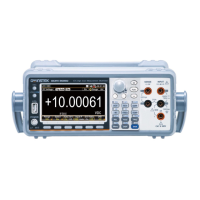The principle of current measuring is to obtain current
via the voltage proportionated by the measured shunt
resistor and the current under test. The circuit is
basically designed by high impedance (0.01Ω~100Ω
approximately) and with shortcoming of voltage drop
by shunt. There will be obvious error occurred while
measuring low current due to the measurable voltage
generated by a larger shunt.
An ideal ammeter never changes flowing route of
current, and thus it owns the characteristics of both
zero-input resistor and zero-input voltage drop. In
practice, however, ammeter always generates an input
voltage drop while measuring, which is known as
burden voltage in series.

